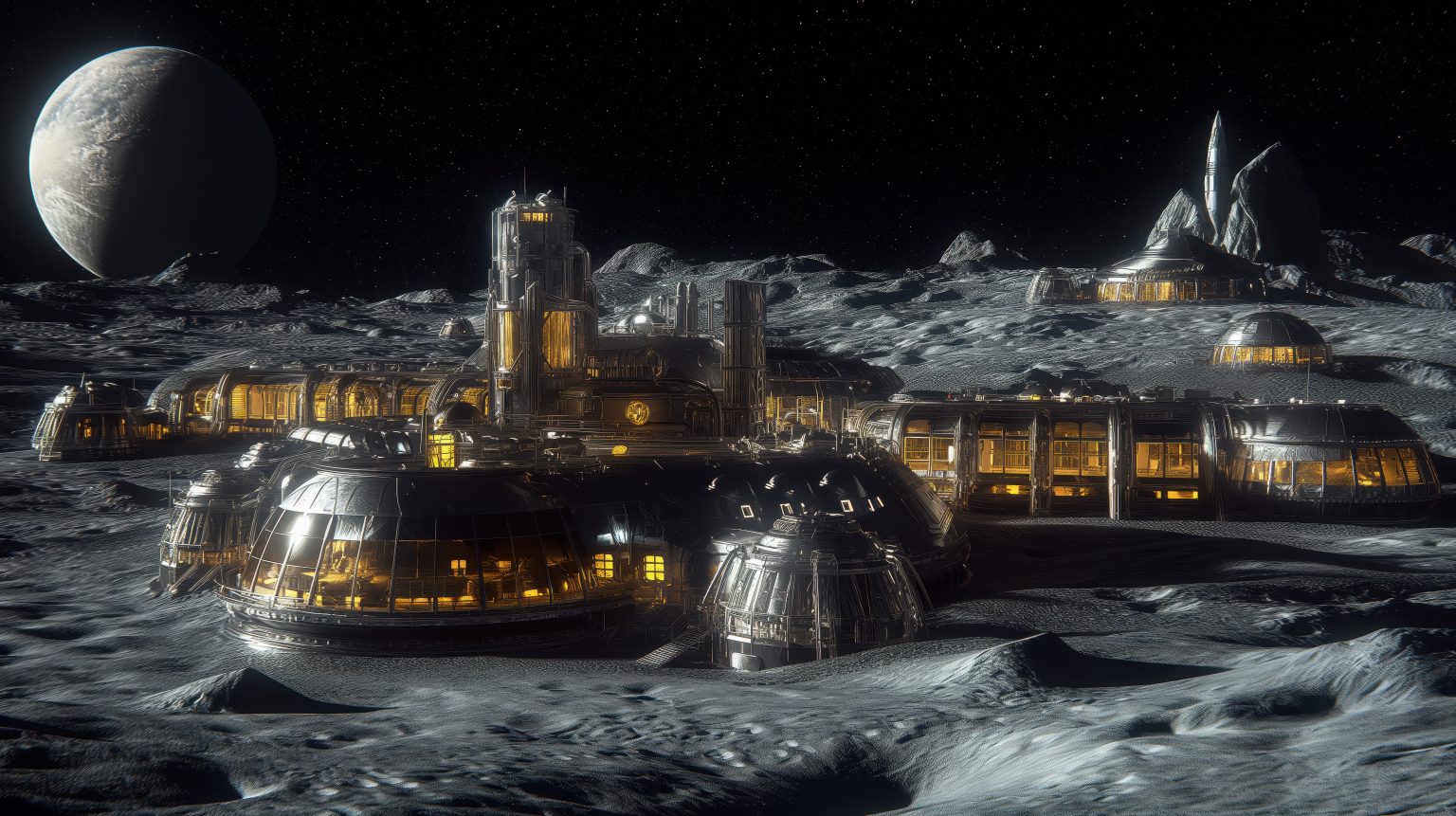In a monumental step toward establishing a human colony on the Moon, India, China, and Russia have joined forces to develop a nuclear power plant on the lunar surface. The project, spearheaded by Russia’s state nuclear energy corporation, Rosatom, will generate up to half a megawatt of energy, powering future lunar base operations. This ambitious collaboration underscores the growing need for reliable, sustainable energy sources to support long-term human activities on the Moon.
A Collaborative Space Initiative
As part of this initiative, India, traditionally a rival to China, is now aligning with both China and Russia in a bid to push forward lunar exploration. Alexey Likhachev, head of Rosatom, announced the partnership at the Eastern Economic Forum in Vladivostok, emphasizing the international nature of the project. “With the involvement of the international community, our Chinese and Indian partners are very interested in this,” said Likhachev.
The nuclear power plant, once operational, is expected to supply consistent energy to a lunar base—a critical piece of infrastructure for any long-term presence on the Moon. India’s involvement comes as it ramps up its lunar ambitions, including a plan for a manned mission to the Moon by 2040.
The Technology Behind the Lunar Nuclear Power Plant
The lunar nuclear power plant is designed to operate autonomously, minimizing the need for human oversight during its construction and operational phases. According to Roscosmos, Russia’s space agency, the project is already underway and will play a key role in powering the lunar base, which could be crucial for a permanent human settlement. This nuclear solution is considered far more reliable than solar energy, which is limited by the Moon’s 14-day-long nights.
Nuclear power is regarded as the best option to sustain life on the Moon. A stable, continuous energy source is needed to power essential activities such as heating, drilling, refrigeration, and rovers. Experts believe that nuclear energy provides the consistency and strength required for these operations, especially in the harsh lunar environment where solar power is not always feasible.
India’s Lunar Ambitions
India’s involvement in the lunar nuclear power plant project is in line with its long-term plans for Moon exploration. After the success of Chandrayaan-3, which made India the fifth nation to land on the Moon, the Indian Space Research Organisation (ISRO) has laid out a roadmap for manned lunar missions by 2040. Prime Minister Narendra Modi has called for ambitious space goals, urging the nation to accelerate efforts toward human spaceflight.
India’s collaboration with Russia and China signals a new chapter in its space diplomacy. While India continues to work closely with the United States on other space initiatives, such as the Gaganyaan mission, its participation in the lunar nuclear power project demonstrates its willingness to diversify international partnerships in space exploration.
Global Race for Lunar Colonization
The global race to establish a permanent presence on the Moon is intensifying, with major powers like the United States, Russia, and China competing to build the necessary infrastructure. NASA, for example, is also exploring the possibility of deploying nuclear reactors to support long-term lunar settlements.
Both Russia and China have already laid the groundwork for future lunar collaboration with the announcement of the International Lunar Research Station (ILRS), a joint project aimed at creating a sustainable lunar base. With potential deployment dates between 2035 and 2045, the ILRS project has now expanded to include India, strengthening the trilateral partnership.
The lunar nuclear power plant will be a significant piece of this infrastructure puzzle, allowing for continuous, reliable energy to support activities like scientific research, resource extraction, and human habitation.
Challenges and Safety Concerns
Despite the technological advancements, the project is not without challenges. Constructing and operating a nuclear power plant on the Moon involves complex logistics, including transporting nuclear materials safely through space. However, scientists have assured that the risk of
radiation exposure is minimal, even in the event of a launch failure. The reactors are designed with automatic shutdown features to prevent any incidents, ensuring safety both during transit and operation on the lunar surface.
Conclusion
The collaboration between India, China, and Russia to build a nuclear power plant on the Moon marks a significant milestone in the race for lunar colonization. As these nations work together to overcome the challenges of long-term lunar habitation, this project represents a bold step toward realizing humanity’s dream of living and working on another celestial body.
With nuclear energy paving the way, a permanent human presence on the Moon is no longer a distant goal but a developing reality. India’s participation in this groundbreaking initiative puts it at the forefront of space exploration, with the potential to accelerate its timeline for future lunar missions.
